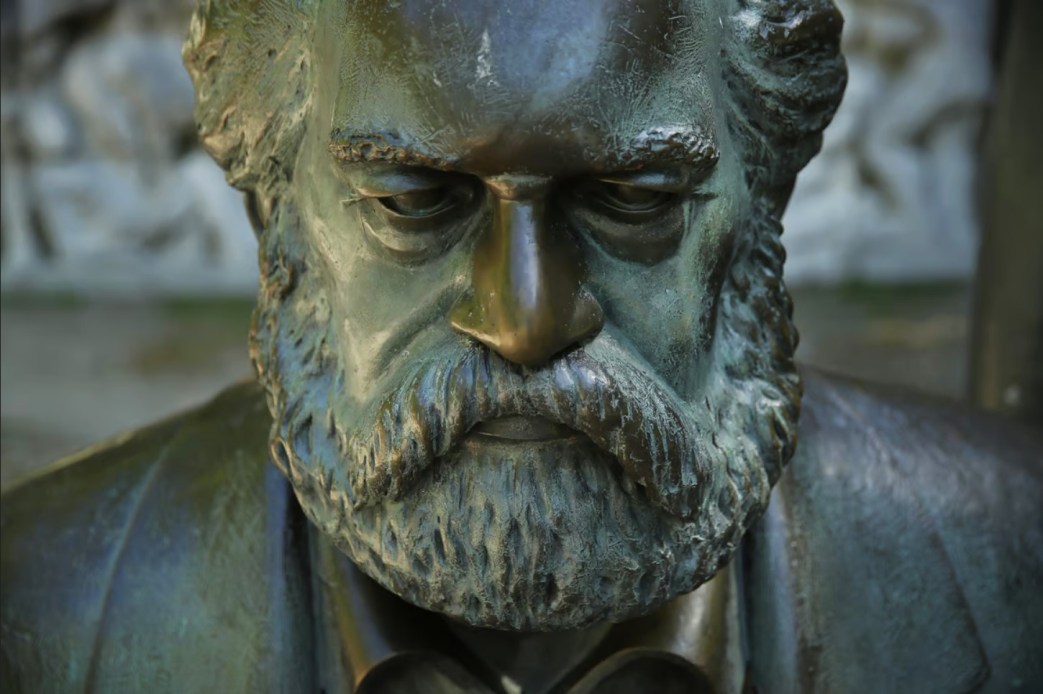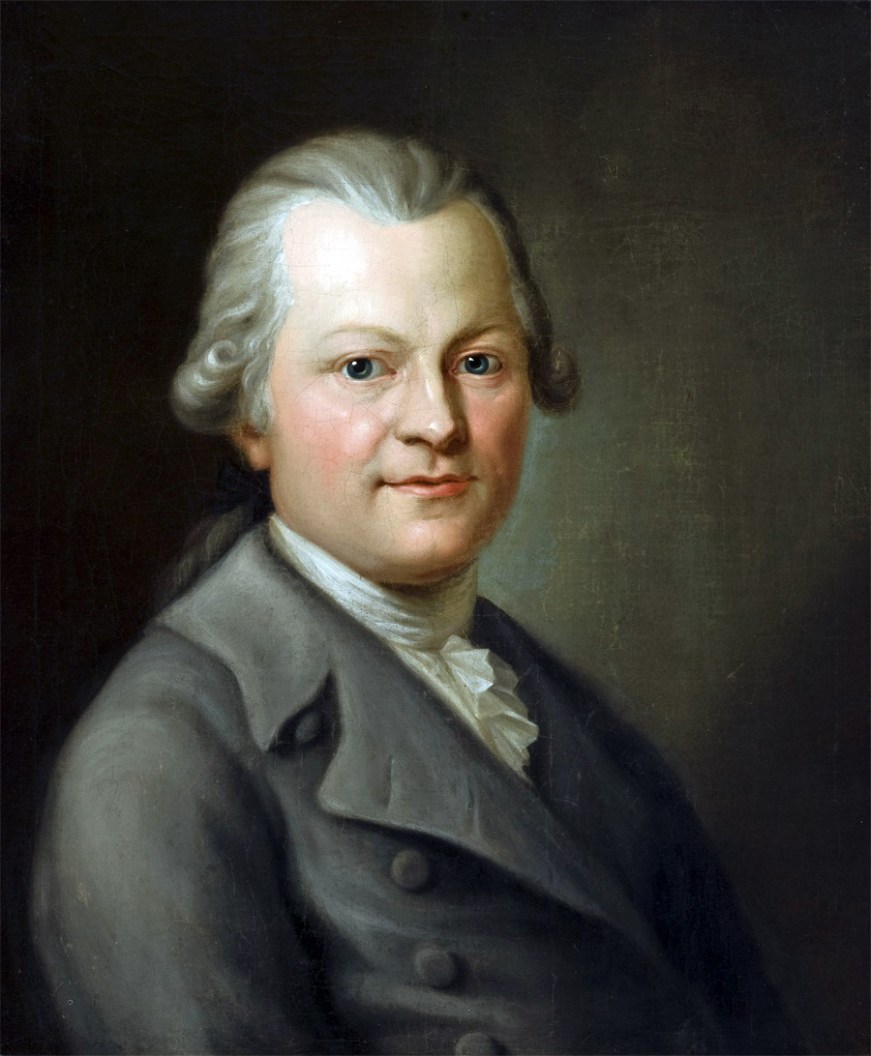
‘Karl Marx and Metaphor’ (1903) by Franz Mehring from Karl Marx: Man, Thinker, and Revolutionist; a Symposium edited by David Riazanov, Translations by Eden and Paul Cedar. International Publishers, New York. 1927.
IN a note to the preface to the second edition of Capital, Marx writes: “The mealy-mouthed babblers of German vulgar economy fall foul of the style of my book. No one can judge the literary shortcomings of Capital more harshly than I do myself. But for the benefit of these gentry and their public, I shall seize the opportunity of quoting one English and one Russian press notice.” The Russian critic tells us that this author “in no way resembles. … the majority of German scholars…. who write their books in a language so dry and obscure that die heads of ordinary mortals are cracked by it.”
Karl Marx’s style certainly deserves careful study. Such an investigation would contribute notably to the understanding of the man and his work. But the task would be difficult, and it is not one of those immediately incumbent on his heirs. The last thing he would have wished would be that we should, for such a reason, neglect the practical diffusion of his ideas. Hitherto, therefore, there have been no more than scattered observations regarding his choice of words; and that is all that can be attempted here, when, on die twenty-fifth anniversary of his death, we venture to criticise the objection which bourgeois scientists are so fond of bringing against his style and his method of exposition.
From Herr Wilhelm Roscher down to the youngest university instructor, they all complain of his passion for metaphor. Marx’s fondness for the use of figurative language is indisputable: but what these adversaries mean to convey by the accusation is that though his intelligence may have been brilliant, it was certainly not acute; that, entangled in “obscure mysticism,” he could only elucidate even the doctrine of historical materialism quite vaguely, and with the use of a “patchwork of imagery.”
Against these tirades, it will suffice to quote the dictum of Aristotle, that the mark of genius was the ability to homoion theorein — to recognise likeness. No doubt it may be contended that this characteristic of the genius, is likewise a characteristic of the fool. Between the energy and freshness of Luther’s phrase- ology in the sixteenth century, and the language of Goethe in the eighteenth century, there came, in the seventeenth century, the extravagances of euphuism and Marinism, of which Albrecht von Haller remarked that it was “bombast swimming on metaphors as if on inflated bladders.” In reality, however, this does not refute but confirms Aristotle’s remark. The Marinists did not, in truth, recognise likeness, and therefore they forcibly coupled dissimilars. To raise the objection seriously shows merely that the objector is as blind as a mole, and cannot distinguish the blooming roses on a girl’s face from the rouge with which an old maid tries to give a lively tint to her withered cheeks.
Among German classical writers, Lessing did more than any other to expound the philosophy of metaphor as a form of literary presentation. To himself, as a master of metaphor, applies what he says of himself (in a brilliant metaphor) as a poet — that he was not born a poet, but became one. In his earlier writings, we see little inclination to use figurative language; and when figures are used, their use is sometimes unhappy. Even in Laocoon he writes: “A mere metaphor proves nothing and justifies nothing.” A few lines lower down on the same page he remarks: “But here the sense is nothing, – and the imagery is everything; and imagery without sense makes of the liveliest poet a tedious chatterer.” In a subsequent metaphor, Lessing compensates for the one sidedness of these remarks by admitting that, in a complete presentation, thought and imagery belong to one another like husband and wife.
Lessing threw light on the problem from both sides. He did so from one side when he wrote: “What is it that makes an author bombastic, if not the unduly frequent and too far-fetched use of over-bold metaphors.” But he did so from the other side when he wrote: “When I work upon my reader’s imagination, I am also trying to work upon his understanding. I regard it, not merely as useful, but also as essential, to clothe reasons in imagery, and to indicate by allusions all the subordinate ideas which either tire reasons or the metaphors awaken. One who neither knows nor understands this, must straightway renounce the desire to become an author, for those who have become good authors have only done so by advancing along that road.” Thus wrote Lessing in his Anti-Goeze, whose overwhelming profusion of brilliant metaphors elicited from the unfortunate Hamburg pastor reproaches no less heart-breaking titan those called forth by Marx’s metaphors from Roscher and his associates.
In contradistinction to Lessing, Goethe was born, and did not become, a “metaphor-maker” (he used the term of himself). Well known is the verse in which he says that he must not be forbidden to use metaphors, since he cannot explain himself without them; while to Frau von Stein he wrote: “In metaphors I run a race against Sancho Panza and his proverbs.” This metaphor is characteristic of Goethe’s metaphors : proverbs are metaphors in which the folk thinks and poetises, fabulises; and Luther was fond of borrowing epithets from the folk vernacular that thereby he might make his words both pithy and picturesque. Furthermore, Hegel, the chief of our classical philosophy, was (like Goethe, the chief of our classical literature) a great “metaphor-maker.” In this respect his writing marks a notable advance on that of Kant, who is mainly responsible for the dry-as-dust scholasticism of the German professorial literary style — and the worst count in the indictment is that Kant could write both elegantly and clearly when he chose. It is a gross exaggeration to say that Hegel’s style is typical of cumbrous, obscure, thought-spinning. As Rosencranz, his biographer, aptly remarks, Hegel’s writing is saturated with all the elements of the German tongue, from mediaeval mysticism to the phraseology of the Enlightenment; and it is often boldly and effectively metaphorical.
In this matter, as in others, Marx was the ablest of Hegel’s disciples. He, too, was a “metaphor-maker” from birth upwards, and in his thesis for his doctorial degree, imagery wells up as though from an inexhaustible spring. The whole essay — a discussion of the differences between the natural philosophy of Democritus and that of Epicurus — was one prolonged metaphor, showing how the Epicurean natural philosophy celebrates its greatest triumph in the doctrine of the heavenly bodies, and all the same wholly collapses thereafter. To Marx’s youthful days likewise belongs the image in which he declares that “Religion is for us the illusory sun, which, to man, seems to circle around him, until he realises that he himself is the centre of his own turning.” So is the image: “One and the same mind builds philosophical systems in the brains of philosophers, and railways with the hands of the operatives.” Especially free in the use of metaphor is A Contribution to the Critique of Political Economy. In the preface to this work he may be said to have given a rather sketchy exposition of the historical-materialist method, in a “patchwork of imagery”; and again in the first chapter of Capital, where he summarizes the contents of the Critique.
In this chapter it seems to me that Marx achieves his highest level of stylistic excellence (looking at the matter solely from the outlook of literary craftsmanship). Here we can get the clearest, the most precise grasp of the nature of his imagery; and here we find the explanation of the hostility with which bourgeois professors have always regarded Marx’s metaphors. Let me quote from Section 4, on “The Fetishism of Commodities, and the Secret thereof”; “A commodity appears, at first sight, a trivial thing, and one easily understood. But analysis shows that it is a very queer thing indeed, full of metaphysical subtleties and theological whimsies. So far as it is a use value, there is nothing mysterious about it …. When we make wood into a table, the form of the wood is altered; none the less, the table is still wood, an ordinary thing appreciable by our senses. But when it presents itself s to us as a commodity, it has become transformed into something which, though sensual, is also beyond the scope of the senses. It does not merely stand with its legs upon the ground; but, confronting all other commodities, it stands upon its head, and within its wooden head it evolves fantastical notions which are far more wonderful than if it began to dance of its own volition.” Is not that a shrewd dig at all the wooden-heads who produce metaphysical speculations and theological whimsies in such vast quantities, but are not competent to manufacture as much substance appreciable by the senses as would represent an ordinary, everyday table?
In Marx’s writings, a metaphor is never introduced for its own sake, as a mere ornament. Nor is it only, as with Lessing, an aid to fuller and easier understanding, or an attempt to influence the imagination as well as the reason. It is a primal contemplation of the two like objects at one and the same time: it is the realisation of the ideal of that perfect mode, of presentation wherein, as Lessing phrased it, thought and imagery belong to one another like husband and wife. Metaphor, as Marx uses it, is the sensorily appreciable mother of the thought, which receives from that mother the breath of life.
Our bourgeois professors fail to understand this, and we should be wrong to suppose that their lack of understanding is due to ill-will on their part. They cannot understand, and indeed they ought not to understand. What would happen to capitalist society if the racy metaphors of revolutionary dialectic were to come to life in the professorial chairs of its universities? That is why these good patriots talk so glibly of “obscure mysticism” and of a “patchwork of imagery.” Marx’s use of metaphor is, to a supreme degree, one of the secrets of genius, and must forever remain an enigma to such critics as these.
They contrapose to it their “conceptual analysis,” the unending shadow-dance of metaphysical notions, which monotonously glides along the walls of the capitalist prison-house; and they are full of pride that no “obscure mysticism,” no “patchwork of imagery,” is requisite to prove that the mutual embraces of these shadows can never procreate a living child. In the world of nonentity, metaphor too has lost its rights!
‘Karl Marx and Metaphor’ (1903) by Franz Mehring from Karl Marx: Man, Thinker, and Revolutionist; a Symposium edited by David Riazanov, Translations by Eden and Paul Cedar. International Publishers, New York. 1927.
Contents: Introduction by D. Ryazanoff, Karl Marx by Friedrich Engels, Engels’s Letter to Sorge concerning the Death of Marx, Speech by Engels at Marx’s Funeral, Karl Marx by Eleanor Marx, The June Days by Karl Marx, The Revolution of 1848 and the Proletariat A Speech by Karl Marx, Karl Marx by G. Plehanoff, Karl Marx and Metaphor by Franz Mehring, Stagnation and Progress of Marxism by Rosa Luxemburg, Marxism by Nikolai Lenin, Darwin and Marx by K. Timiryazeff, Personal Recollections of Karl Marx by Paul Lafargue, A Worker’s Memories of Karl Marx by Friedrich Lessner, Marx and the Children by Wilhelm Liebknecht, Sunday Outings on the Heath by Wilhelm Liebknecht, Hyndman on Marx by Nikolai Lenin, Karl Marx’s “Confessions” by D. Ryazanoff.
PDF of book: https://archive.org/download/in.ernet.dli.2015.54746/2015.54746.Karl-Marx-Man-Thinker-And-Revolutionist_text.pdf



